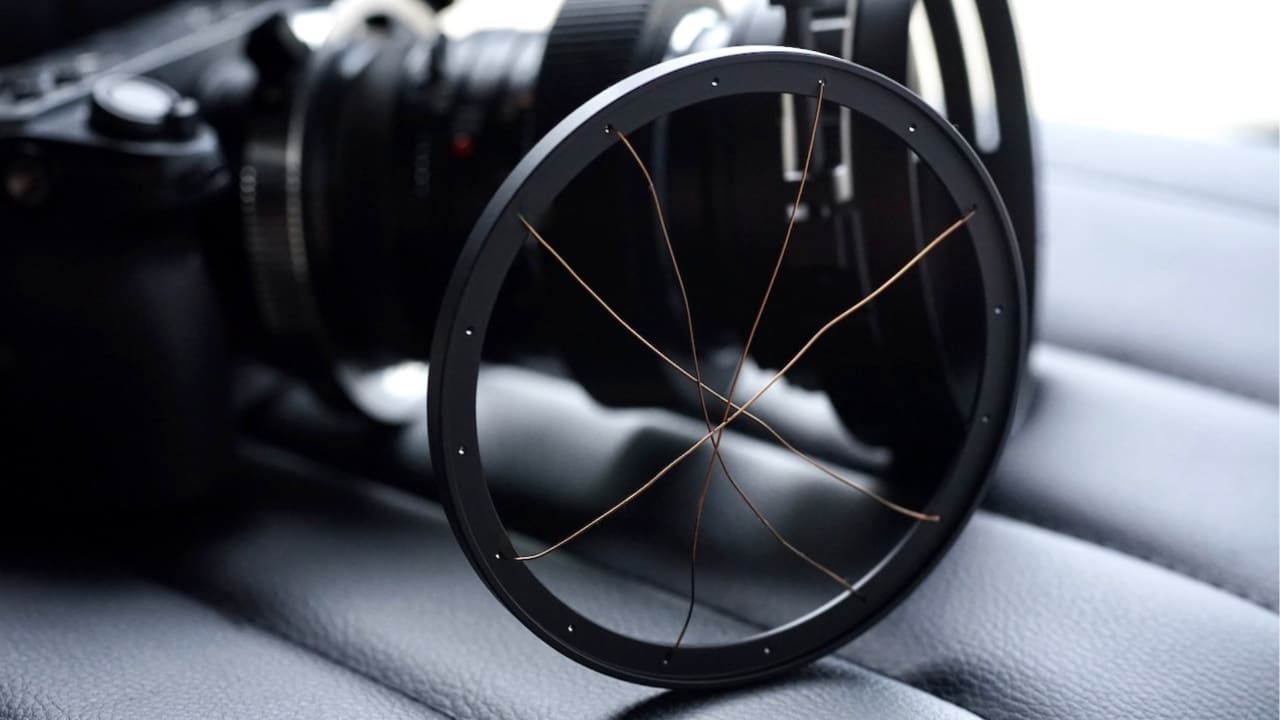
Back in the day, camera operators would put all manner of material over their lenses to create effects (stockings were popular). The Simmod Synergy Ring updates that DIY aesthetic for the 2020s.
Given how much attention we pay to precision in lenses, then, it’s mildly shocking what we’re sometimes we’re willing to throw in front of them. Glittery particles are always popular. Tiny lenslets made of minute glass beads create another kind of diffusion. People have used fabrics, bits of plant, petroleum jelly, and surprised farm animals… one company makes Scarf Dust and PA Tears.
Abusing the staff to the point of weeping isn’t necessary, however, so long as we’ve got the Simmod Synergy Ring DIY Filter Creator Kit, which comprises several components designed to make it easier to experiment. The kit is based on one of two clamps, which accommodate lenses with either 80mm or 95mm front diameter, plus three rings designed to support various types of filter media. There’s one with holes designed to mount fibres or wires to create interesting flares, a deeper one with silicone bands intended to hold fabrics, and a clear glass filter designed to carry – well – whatever you might want to stick on it. The two sizes sell for a modest $149 or $199, respectively.
Endless experimentation
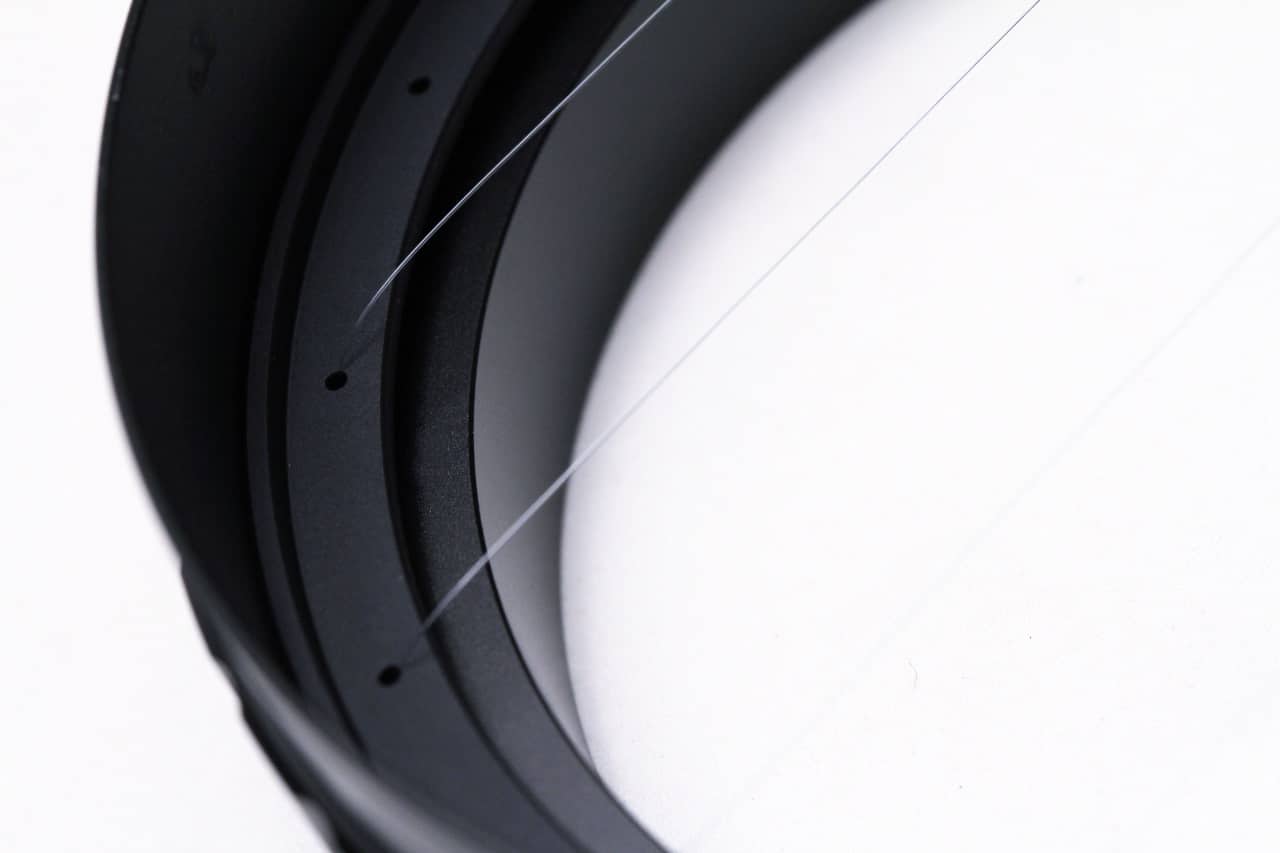
The Flare FX ring with a very fine fishing line to create streaks. Possibly this is better than a glass filter because it will not create unwanted reflections
It’s a straightforward idea but provokes endless experimentation. The first thing that springs to mind is a subtler imitation of a Schneider True-Streak, described by Schneider itself as intended to create “anamorphic-like” streaks. The construction of a True-Streak is effectively a lot of parallel pieces of tiny, round plastic rods, which look like (and perhaps are) fishing line.
So, threading some fine fishing line through Simmod’s Flare FX ring, we discover that – yes – it’s quite possible to create single-point streaks if we keep the runs of fishing line parallel. The effect is less pronounced because the Simmod ring spaces the lines further apart than even the subtlest True-Streak, but it certainly creates a linear flare, which we’ll call Subtlemorphic. It’s arguably better than a glass filter because it won’t reflect.
Duplicating existing filters probably isn’t really the idea, though it’s possible to create multi-point stars reminiscent of a 1970s light entertainment broadcast by lacing things up in contrary directions. Things don’t always work quite as expected; it seemed a little reluctant to pick up the colour of the fishing line – a pale blue, naturally – but this sort of discovery is half the fun. Perhaps thicker, bluer line would change that.
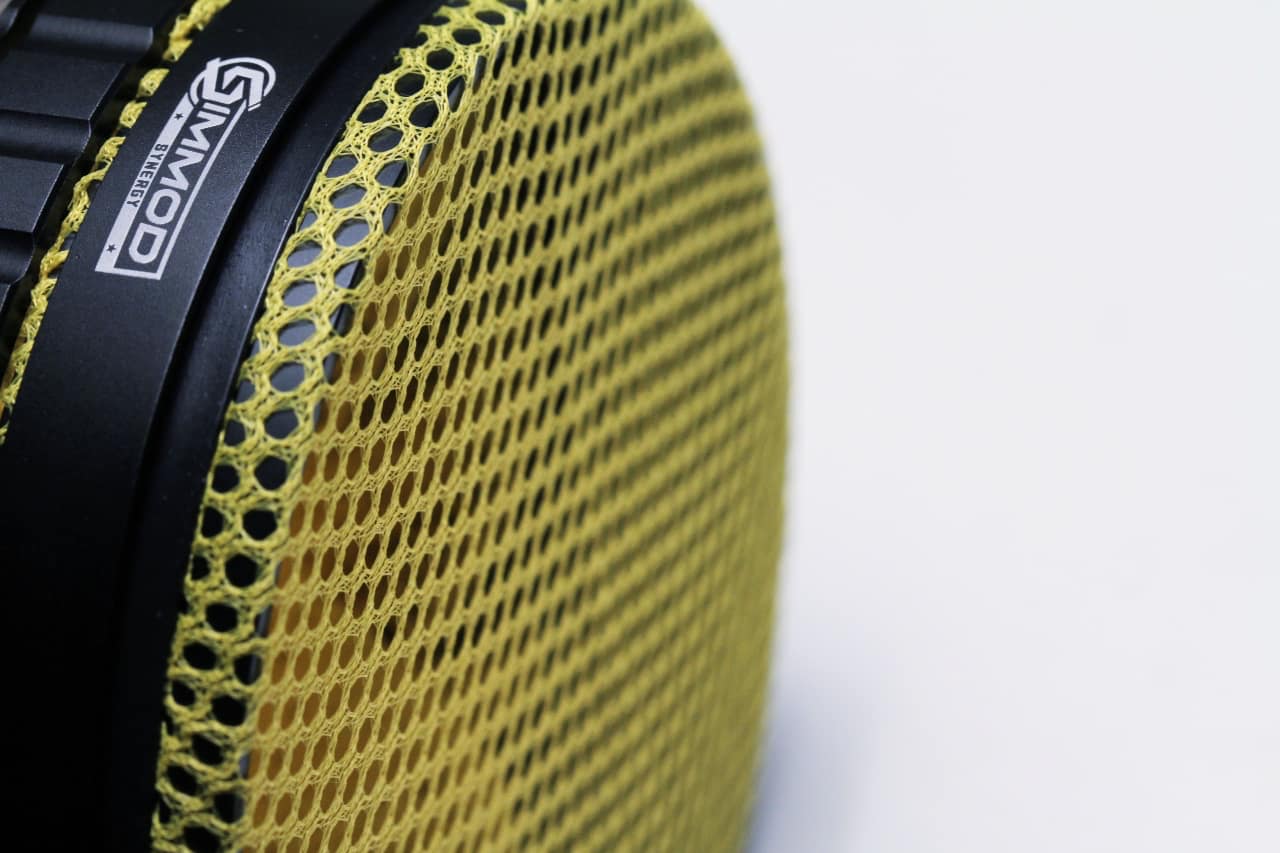
This is almost comically over the top; finer fabrics and subtler colours are probably a better idea... but Simmod's setup encourages this sort of experimentation. And doing this in post is hard
Reaching for the diffuser ring, with its silicone bands designed to anchor fabrics, we enter the world of net diffusion. Or at least, that’s the most obvious thing to do; black stretch fabrics from the lingerie section produce a black mist effect alongside some flaring at angles based on the orientation of the weave. It all creates a situation in which the intrepid experimental cinematographer spends time evaluating pieces of other people’s clothing and pondering: “I wonder if it’d be okay if I cut a six-inch hole in that a little bit.”
Simmod’s design somehow doesn’t encourage restraint, and neither does some of IB/E’s fabric-based filters, which are so, er, imaginative that it’s hard to call anything illegitimate. In that vein, the pronounced yellow fog in one of the images accompanying this article was created using a bright yellow perforated fabric normally used for athletic clothing, creating an effect we’re going to call Tropical Disease Ward. It’s very colourful, though not every effect need be so bold.
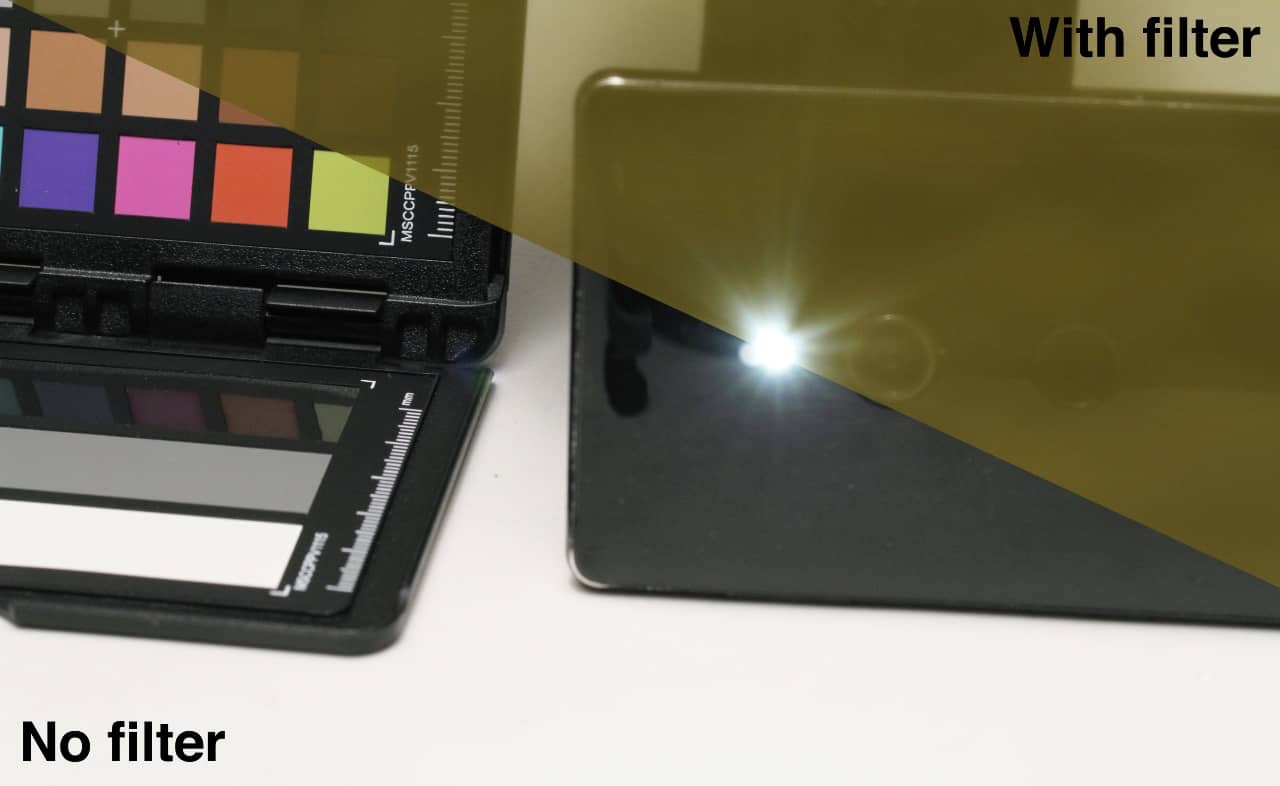
This is a lot of filter, and is possibly only really useful when trying to represent a malarial fever dream - but nobody else has ever used a filter like it
Finally, there’s a simple round glass filter designed to be coated with… well, things. Commercially-made filters often use small reflective flakes, one source of which is, er, the Goddess Pressed Pigment Palette from Technic Cosmetics, purchased for cheap because having a lend of someone’s less-cheap eyeshadow in order to make filters risks interpersonal disharmony. Because it’s so very cheap, Technic’s product is mainly talc and baby oil, and contains very little shiny stuff. Still, sprinkling it over the glass does approximate flake-based diffusion.
The most successful was based on a red-tinted powder, creating a warm-tinted diffusion filter that we’ll name Le Requin Rouge to keep the company happy. A corresponding blue effect would be an original idea: there’s a Warm Black Pro-Mist, but no corresponding Cool Black Pro-Mist. Unfortunately, the reflective particles in this desperately low-cost blue makeup are silver, relying on a blue dye to create the color, so the result wasn’t as cool as we might have preferred. An iridescent flake of different colors is sold for car paintwork, so this bears further experimentation.
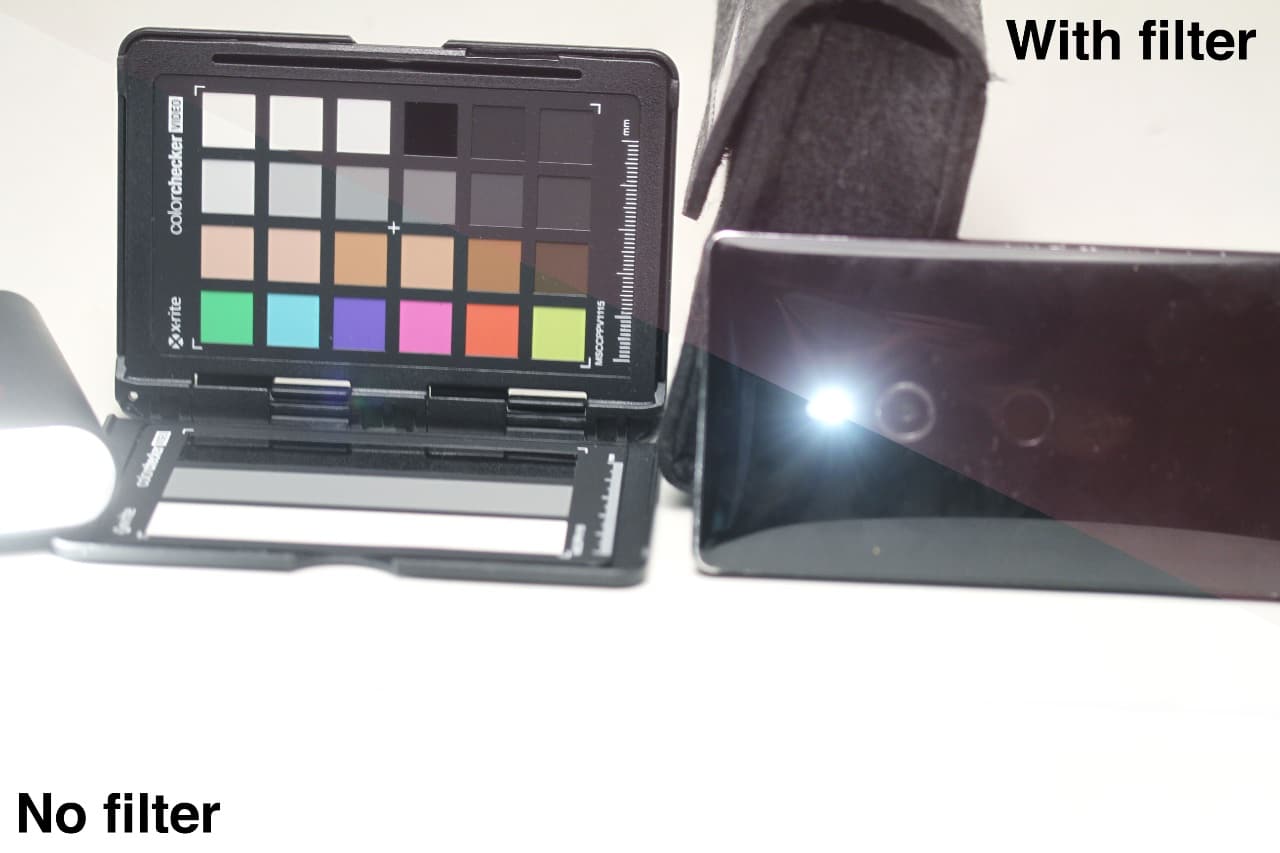
Using a red makeup with coppery flakes creates a warm-tinted diffusion
The sky’s the limit
There aren’t many ways to go wrong with this stuff, and the Simmod design makes it easy to experiment. So long as it’s not falling off into the lens and it’s possible to clean off your creativity in order to make room for more creativity, the sky’s the limit. Sprinkling powders over the glass isn’t very repeatable nor robust against even the lightest breeze, so there may be a reason to put another clear glass slide in front of it. There’s perhaps room for a variation on the flare ring with more closely spaced holes.
While the system is built for cine lenses, the 80mm option happily grips the outer diameter of a 77mm step ring. If you’re an enthusiast of taking still photo lenses out on set and you’d like to achieve a slightly sturdier attachment, Simmod has a variety of products intended to make them more usable, including front rings of specified outer diameter which would make the Synergy clamping ring easier to use on many stills lenses. There are also bolt-on mount conversions, with mating surfaces and screw holes specifically designed to suit several popular stills ranges, offering better stability than straightforward mount adaptors.
Given the huge popularity and the often impractical cost of full lens rehousing, it’s a subject we might revisit – but in the meantime, there are still a lot of things we haven’t tried putting in front of a lens in order to see what happens, and Simmod’s kit makes it very easy to find out.
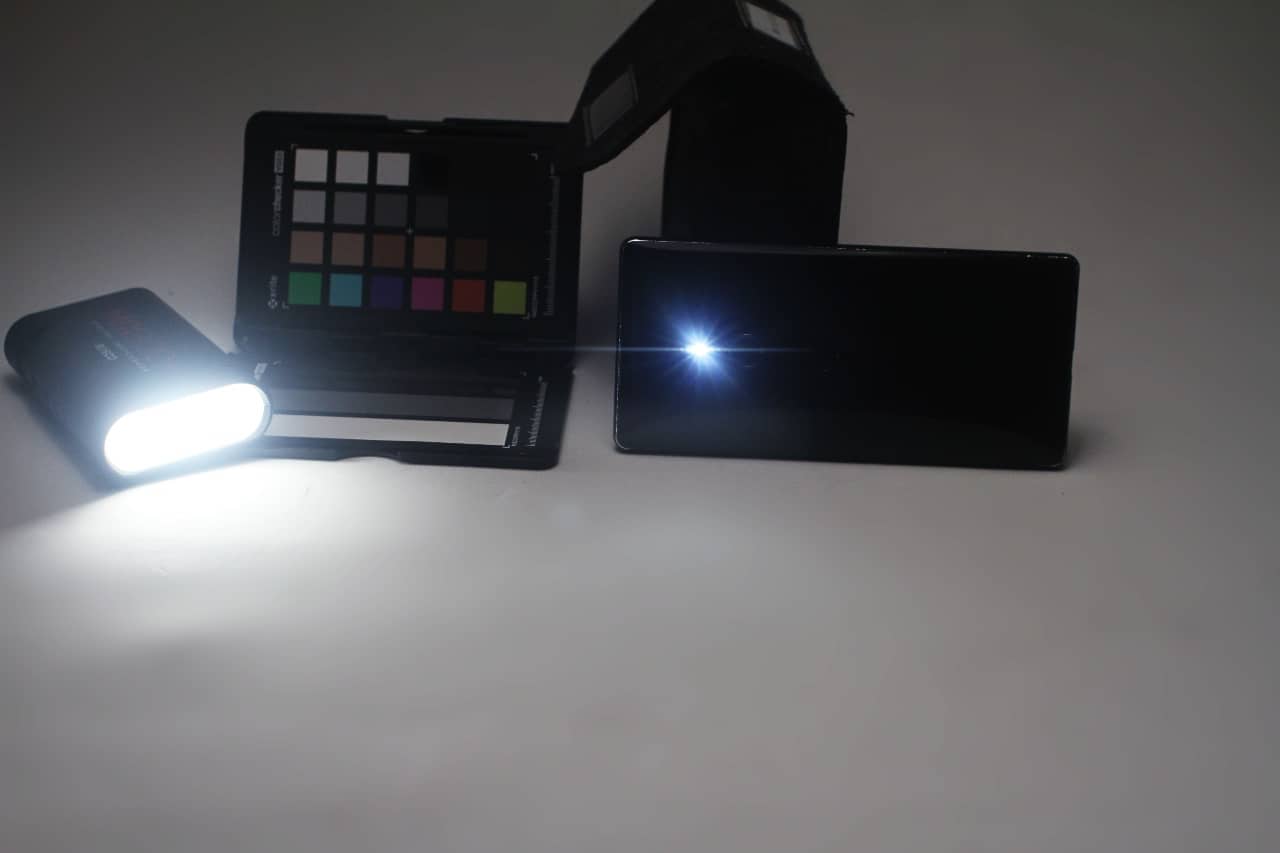
The star flare is an artefact of the Canon EF-S 60mm Macro lens well stopped-down, but the horizontal streak is created by Simmod's accessory. And some fishing line
Tags: Production


Comments